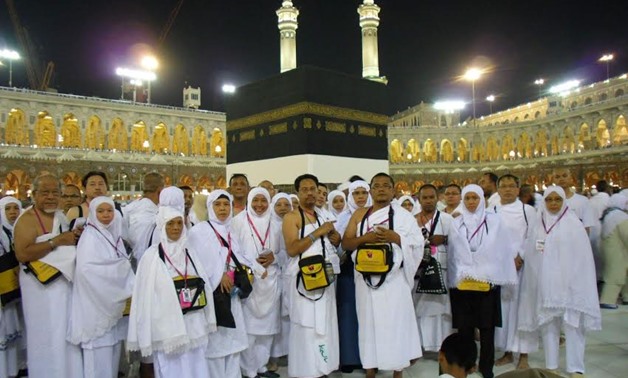
Malaysian pilgrims- Courtesy to Saudi al-mnatiq newspaper
CAIRO - 1 September 2017: At this moment, more than two million people from dozens of countries around the world are in Mecca, Saudi Arabia, performing hajj, the Islamic religious pilgrimage.
Out of this tremendous number of pilgrims, you can easily distinguish the Malaysian missions moving in an organized manner, undertaking the series of rites smoothly, wearing same clothes and bags, with united logo or flag for each group.
Abdul Rahman as-Sudais, the Saudi imam of the Grand Mosque in Mecca hailed the Malaysians' competence in managing and organizing pilgrims to the Holy Land, refereeing to it as “an ideal model of pilgrimage”.
The Malaysian mission for pilgrimage was also awarded the title of “Best pilgrimage Mission” by many religious scholars through the years as their organization and discipline catch the eyes of all Muslims from all over the world and the credit for their organization goes to Tabung Haji (TH).
Tabung Haji (TH) is the Malaysian hajj pilgrims fund board that was established in 1963 with the aim to help provide investment services and manage pilgrimage activities.
Once the Malaysian mission returns back from the pilgrimage, Tabung Haji begins its role in preparing for the next season of Hajj by examining the reports of the pilgrim missions in order to identify previous weaknesses and correct them to improve the services in the next hajj.
The Malaysian pilgrim candidate passes through six stages of training in order to be qualified to perform Hajj
Basic stage
The candidate attends two hours weekly for seventeen consequent weeks to revise the rites of pilgrimage in Malaysian mosques.
Intensive stage
The candidate attends two compete days in the mosque to think about the rites of pilgrimage and by the end, he takes an assessment exam. Those who do not pass the exam are referred to special courses.
Application stage
In the month of Shawwal, two days before the departure of the pilgrim to Mecca, the candidate performs a rehearsal of the rites of Hajj around a model of kaaba.
Arrival stage
When the pilgrim arrives to Mecca, they are given a refresher course to revive their information about the rites of Hajj.
Reminder stage
A list of Hajj ethics and morals are distributed on Malaysian pilgrims to remind them that they come to Mecca for Hajj and worship not shopping. This list reminds them of the Quran verse that “no disobedience and no disputing during Hajj”.
Discussion Stage
Following the return of the pilgrims to Malaysia, they are called to a meeting by Tabung Haji to discuss the quality of Malaysian service and listen to the complaints of the pilgrims in order to improve its service.
It is worth mentioning that Indonesia, Sudan, India and Iran imitate the Malaysian experience of offering training courses for pilgrims before heading to the Kingdom.
The Malaysian model (Tabunjg Haji) is not merely a Haj service and training. It is in fact a non-banking Islamic service that facilitates savings for the pilgrimage by allowing people to deposit money over the years, and when the fund is enough for pilgrimage, the governmental agency arranges the pilgrimage for the person.
The Malaysian model of pilgrimage is a worthwhile experience that has to be reviewed, observed and studied by other Muslim countries.
The Muslim pilgrimage (hajj) is a religious duty that must be carried out at least once in a lifetime by those who are capable, as it is one of the five basic pillars of Islam. One of the largest annual gatherings of people around the world is observed in the 12th Muslim lunar month (Dhu al-Hijjah) and concludes with Eid al-Adha (Feast of Sacrifice).

Comments
Leave a Comment